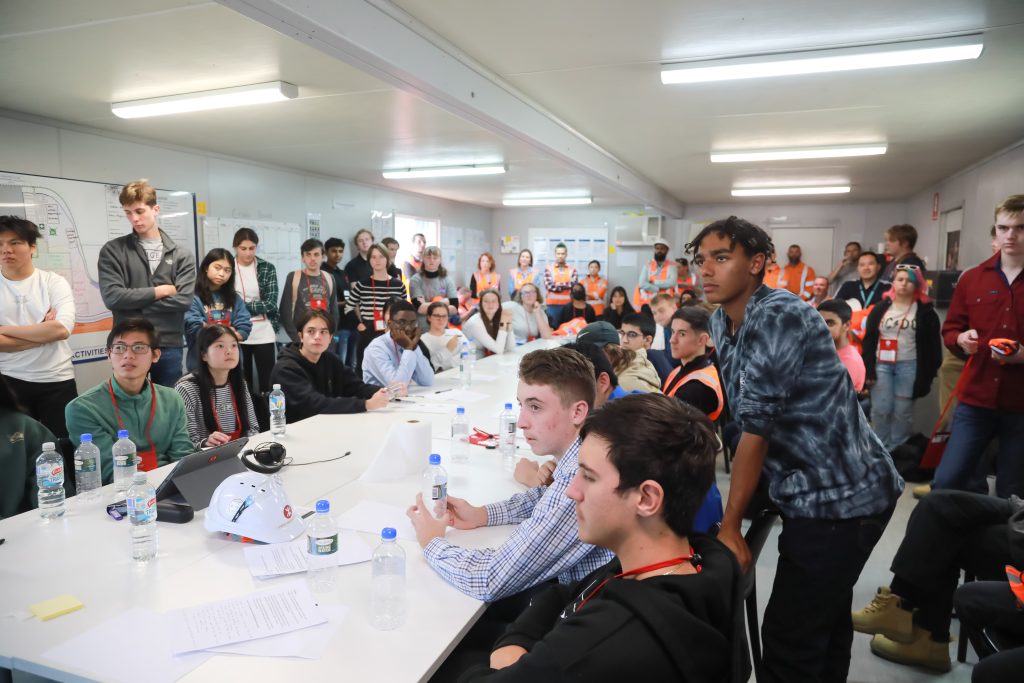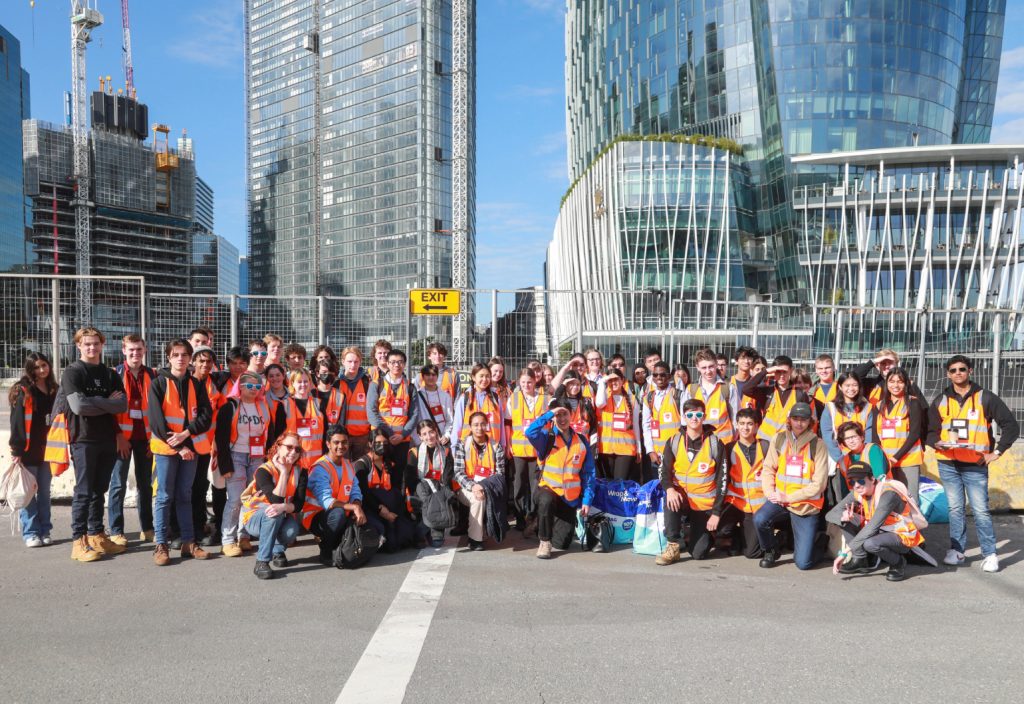Just two days before a Sydney Metro train made its way through the new tunnel under Sydney Harbour for the very first time, 59 Year 11 and 12 students from across Sydney and NSW/ACT were given a glimpse of one of Sydney Metro’s newest city stations.
The visit to Barangaroo Station hosted by MTR, BESIX Watpac and Sydney Metro, was part of the Cochlear Autumn School of Engineering (CASE) – a week-long, deep dive into the engineering profession aiming to inspire our future engineers.
Students said, “It felt surreal, to go down into a station in the first years of its life before anyone else! The construction site was like a different world, everything so complicated and intricate. It is a feeling that you can only experience in person and that cannot be described in words.”
Melvyn Bolus, Delivery Director for Sydney Metro City and Southwest opened the event and said, “the atmosphere at the start of the day was palpable – I could feel the students’ anticipation in wanting to get out and see the site, and [their] eagerness to participate in the workshops.”
“STEM subjects and a career in engineering have given me the opportunity to work on Australia’s biggest transport project, that is currently delivering a world-class, state of the art metro right here in my home city of Sydney. It was great to see the feedback from the students clearly showing further affirmation towards a career in STEM and that the talent pipeline for the engineering profession continues to grow.”
The visit also included scenario planning workshops based on real case studies experienced by the project team. Students role played as project engineers, subcontractors, and members of the public – experiencing just what it is like to problem solve, communicate and lead teams.

“The role-playing activities were fun and gave me a good understanding of the different challenges a project engineer faces daily. All in all, this experience helped to convince me to study civil and work in the construction industry!”
MTR Construction Manager Joe Mushoul said the day provided an opportunity for the next generation of engineers to witness firsthand the daily challenges faced by engineers in the field.
“The scenarios in the workshops targeted the soft skills required for effective communication, project management and problem solving.”
“As a hiring manager, I see how these key soft skills are devolving, as we increasingly rely on technology. I wanted to show these future engineers why they need to value and nurture these intrinsic communication attributes.”
“It was gratifying and hugely encouraging to see them rise to the task and prove to us and to themselves they could achieve this with their innate emotional intelligence.”
Engaging the next generation is vital
Engineers Australia CEO Romilly Madew AO FTSE HonFIEAust sees programs like this as crucial.
“To grow our talent pipeline of future engineers, it’s critical that students are given every opportunity to take part in STEM activities and see the world of engineering up close. Our research shows that one of the biggest barriers to getting students, particularly girls, to consider engineering is a lack of understanding of what an engineer does.”
And that’s exactly what the students were treated to with sessions on every engineering discipline culminating in the visit to the Barangaroo construction site.
The challenges of diversity in engineering
This year’s CASE comes at the same time as Engineers Australia’s response to the government’s Diversity in STEM Review which identified gender balance as one of the most concerning issues as only 16 per cent of Australian engineering students are currently female.
“Programs like CASE address that challenge head-on and are an important step in addressing the engineering skills shortage,” says Madew, noting that 42 per cent of CASE participants identified as female.
Future aspirations
So far, indicators are that the program is a success. When students were asked if they will study engineering at university the response was emphatic with 71 per cent responding ‘Absolutely’ with many of the remaining 29 per cent just undecided as to which discipline to choose.
“I came to this school with uncertainty and left with 110% certainty that this was what I wanted to do,” said another future engineer.
Providing opportunities for senior school students to experience engineering in action is key to the Autumn and Summer Engineering programs. If your organisation would like to provide a similar experience, then please contact Caryn Morgan at stemnsw@engineersaustralia.org.au
CASE is an initiative sponsored by Cochlear, Engineers Australia, the Office of the NSW Chief Scientist and Engineer and several NSW universities, engineering companies and participating Rotary clubs.
